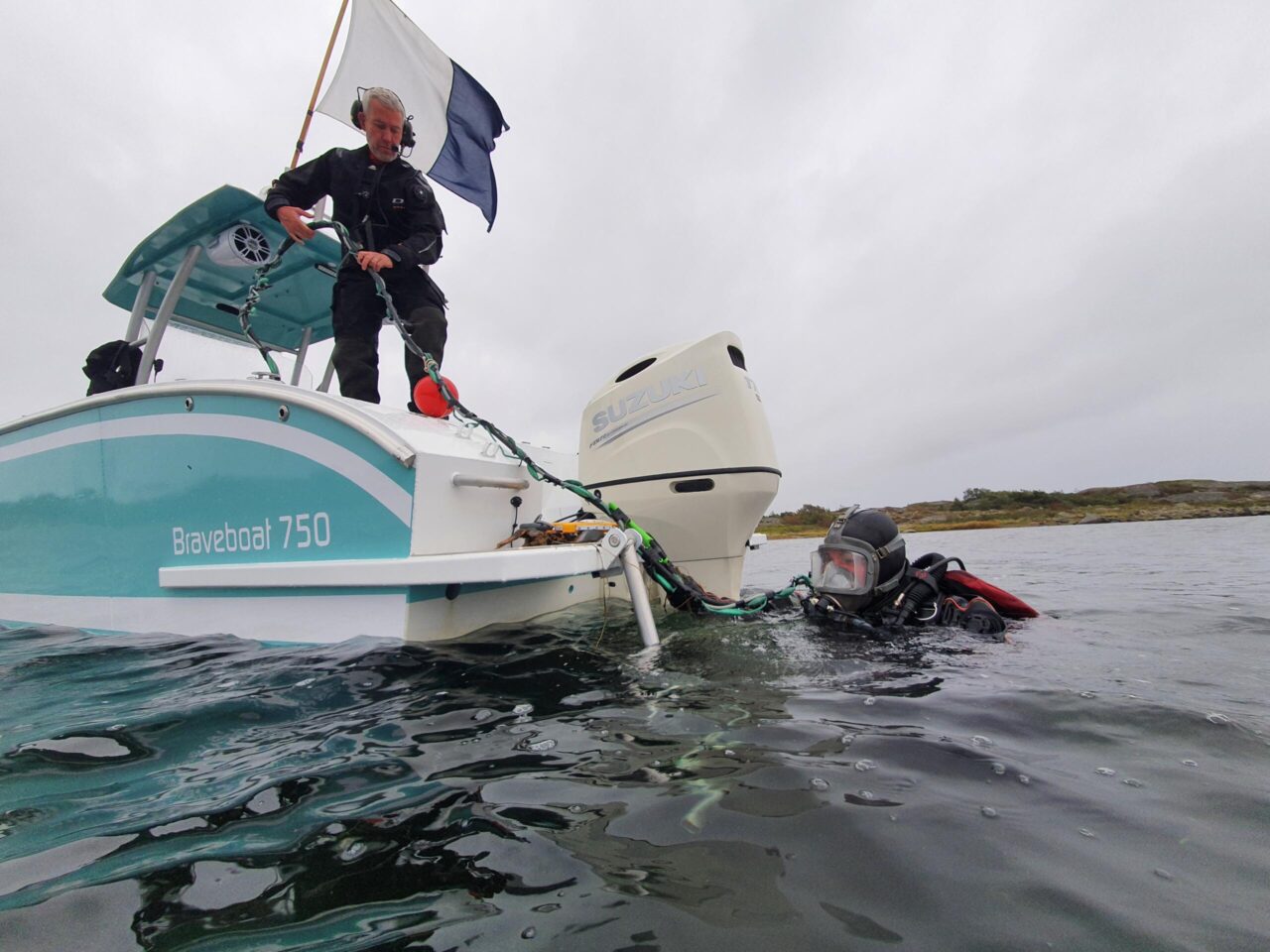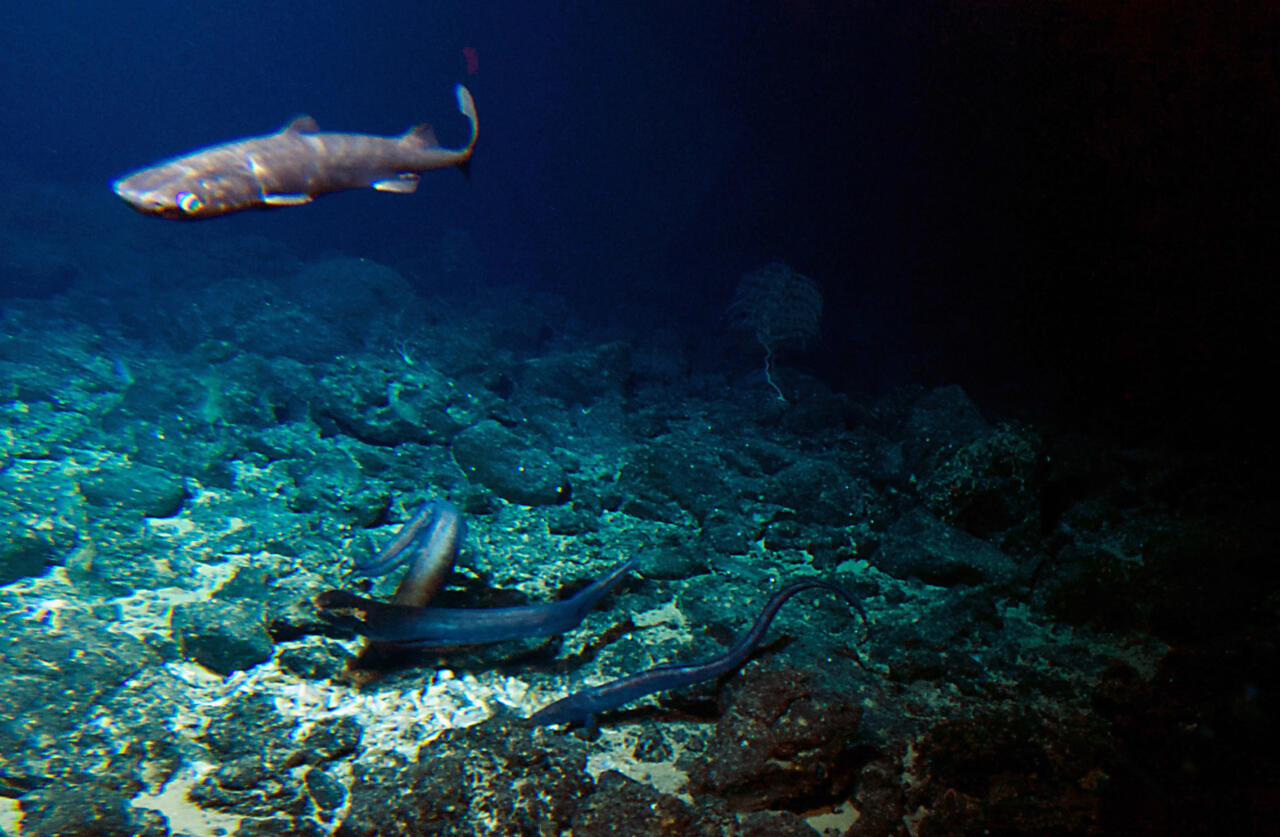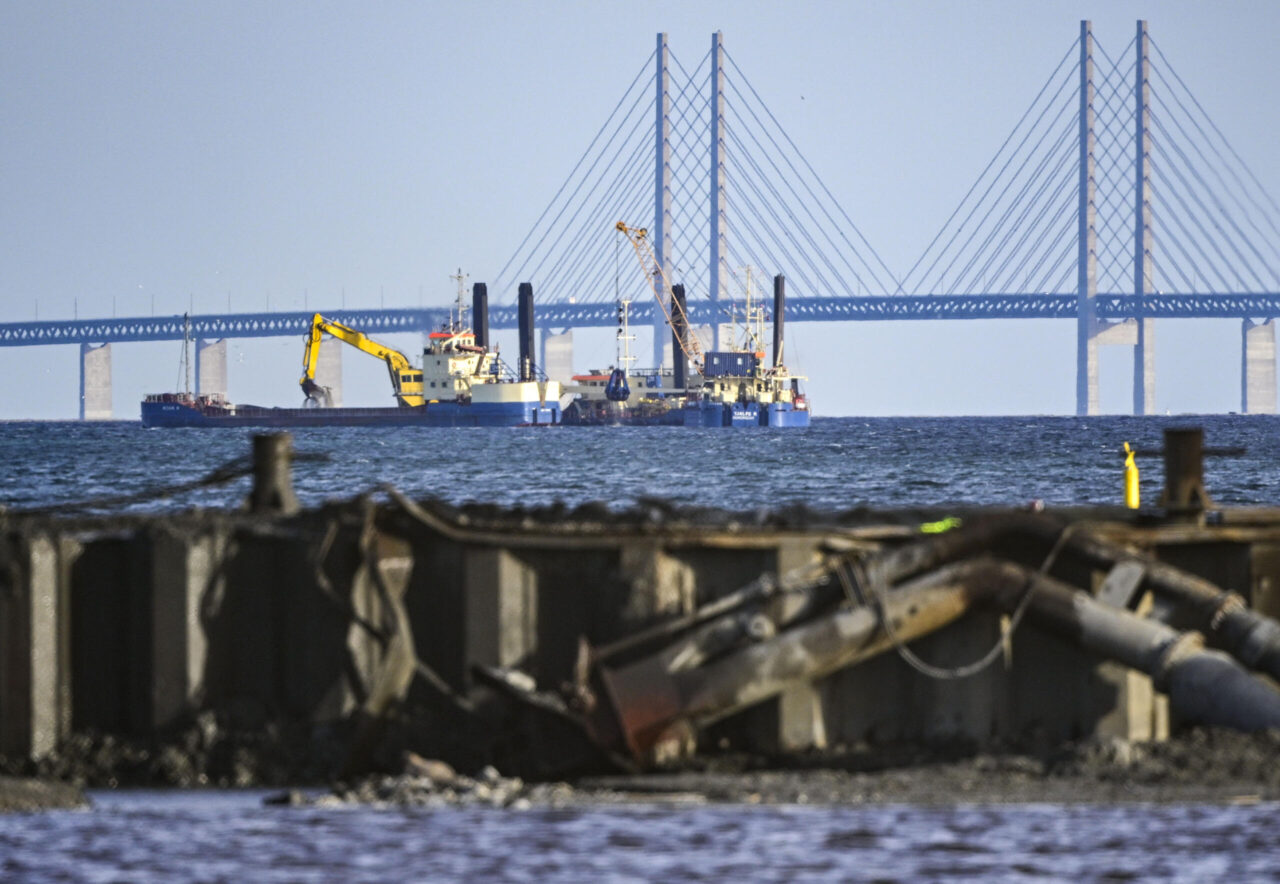Danish record tunnel had to give way to Swedish cannons
It is the world’s longest submerged tunnel of its kind and will halve the travel time from Skåne to the continent.
But a legendary Swedish naval victory in 1644 was setting the stage for the gigantic tunnel construction in the Fehmarn belt.

-Where is the old shoreline? someone asks when media manager Jens Villemoes shows the press around the vast construction area at Rødbyhavn in southern Denmark.
-We just passed it, at the cones there, Villemoes points out.

Photo: Femern AS Via TT
Now we are driving where there was open sea a couple of years ago. The coastline has been moved half a kilometer out into the water, to make room for all the excavated material we retrieve from the seabed.
50 Eiffel Tower
The thought is dizzying. And it often does so on this construction, where most things are almost unimaginably large. In white and blue tents, which each seem to hold a small city, 89 tunnel elements are to be manufactured. Rusty rebar is stacked on every free square meter in the tents – the amount of rebar alone is equivalent to 50 Eiffel Towers.
But most of the weight of an element of at least 73,500 tons is concrete. Casting a part takes about 30 hours of concentrated work, when concrete must be poured nine meters into a form, without bubbles or other defects.
-It should be a nice, tasty concrete smoothie, says Villemoes with satisfaction.
Since such a step cannot be interrupted, the workers take turns around the clock. That part of the work is now underway.

15 millimeters
In the summer, the elements will be towed out into the Fehmarn belt to be lowered into an 18-kilometer-long recess on the seabed. One element at a time, precision work that takes up to a week each.
-We control the elements with wires, with a margin of error of 15 millimeters when they are fixed and then covered on the bottom, says construction manager Anders Wede.
Factor in interruptions due to bad weather and more, and that part of the construction alone is expected to take several years.

Fully assembled, tested and ready, the Fehmarnbelt tunnel is not expected to be in place until 2029. Then the travel time from Copenhagen to Hamburg will be almost halved, from upwards of 5 hours to approximately 2.5. A lot of the travelers are expected to be Swedes, who save about 16 miles compared to the route over the Great Belt Bridge and Jutland that many people take today.
Perhaps best we say New Year’s Eve, smiles Villemoes when asked what date in 2029 the tunnel will be ready for inauguration.
The war came in between
Y-es, a lot can come up that causes it in the timetable.
-We had intended to buy the steel from Russia and Ukraine, says Anders Wede as an example.
-But first the pandemic came in between, then the Russian war of aggression against its neighboring country.
-Now we have to ship it in from Germany and Spain instead.
Wede claps his hands over the vast construction area, bathed in autumn sun, where signal-clad workers look like angrily glowing tiny ants against the dull-colored vast tunnel sections.


Wreck found
Another complicating factor of a more original kind was already apparent when probing ahead of the construction over ten years ago. Divers then found a wreck that turned out to be the Swarte Arent, a Dutch ship that participated and played a decisive role on Sweden’s side in the Naval Battle of Fehmarn in 1644 – one of the Swedish Navy’s greatest military victories in history.
The victory over Denmark pushed forward the Peace in Brömsebro the following year, when, among other things, Gotland, Jämtland and Härjedalen became Swedish.
-You gave us such a beating that I don’t want to talk about it, smiles Jens Villemoes.
-But he says in any case that the discovery of the wreck meant extra work.
-You can’t just plow straight through a place like that with a tunnel, so we adjusted the draw a bit.
Thus, Swarte Arent can continue to rest in peace. Only some of the ship’s cannons have been salvaged and are now on display nearby – as a reminder that neighborly relations have not always been as good as when Danish, Swedish and German travelers soon converge on the new traffic artery.





